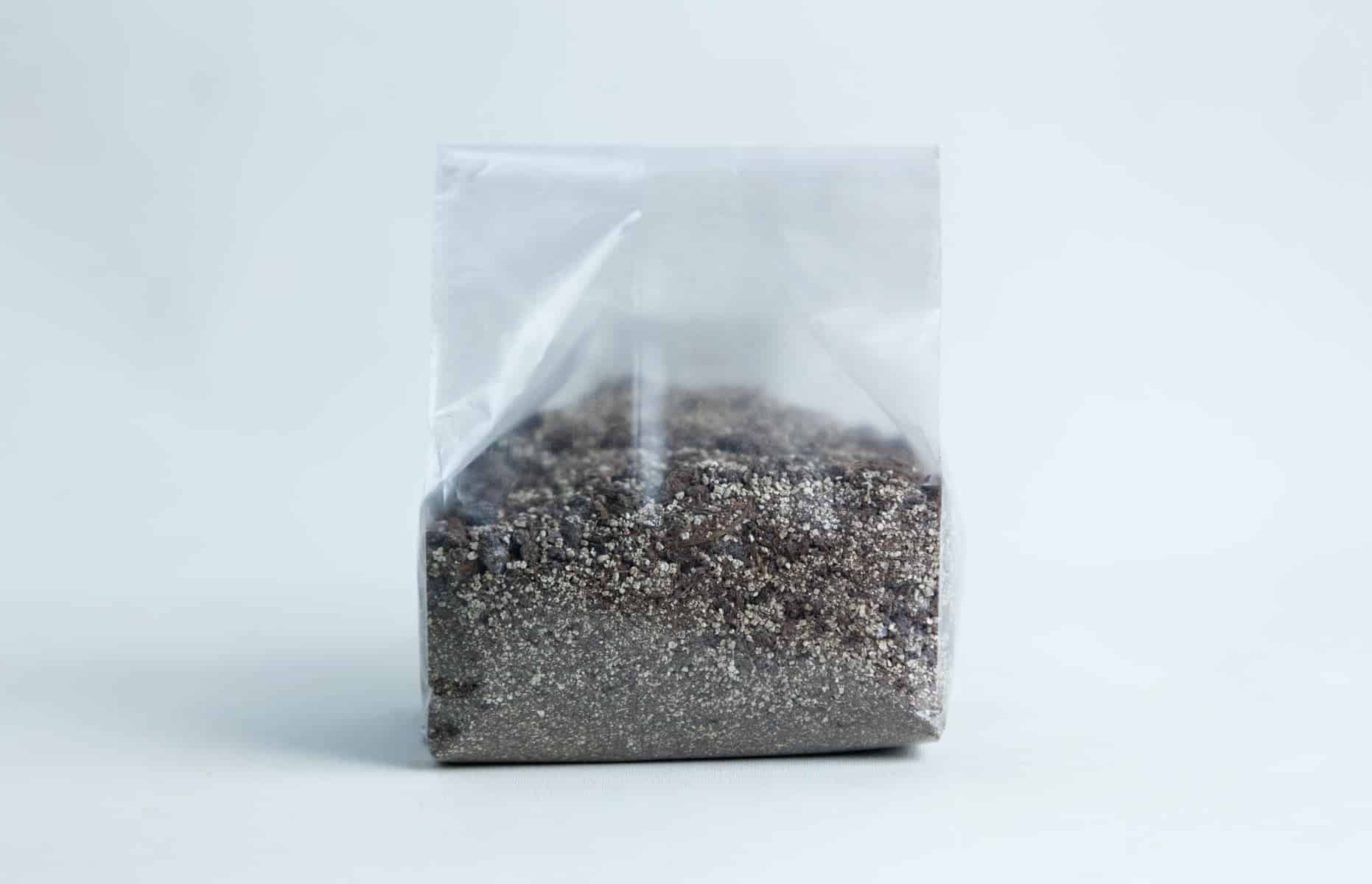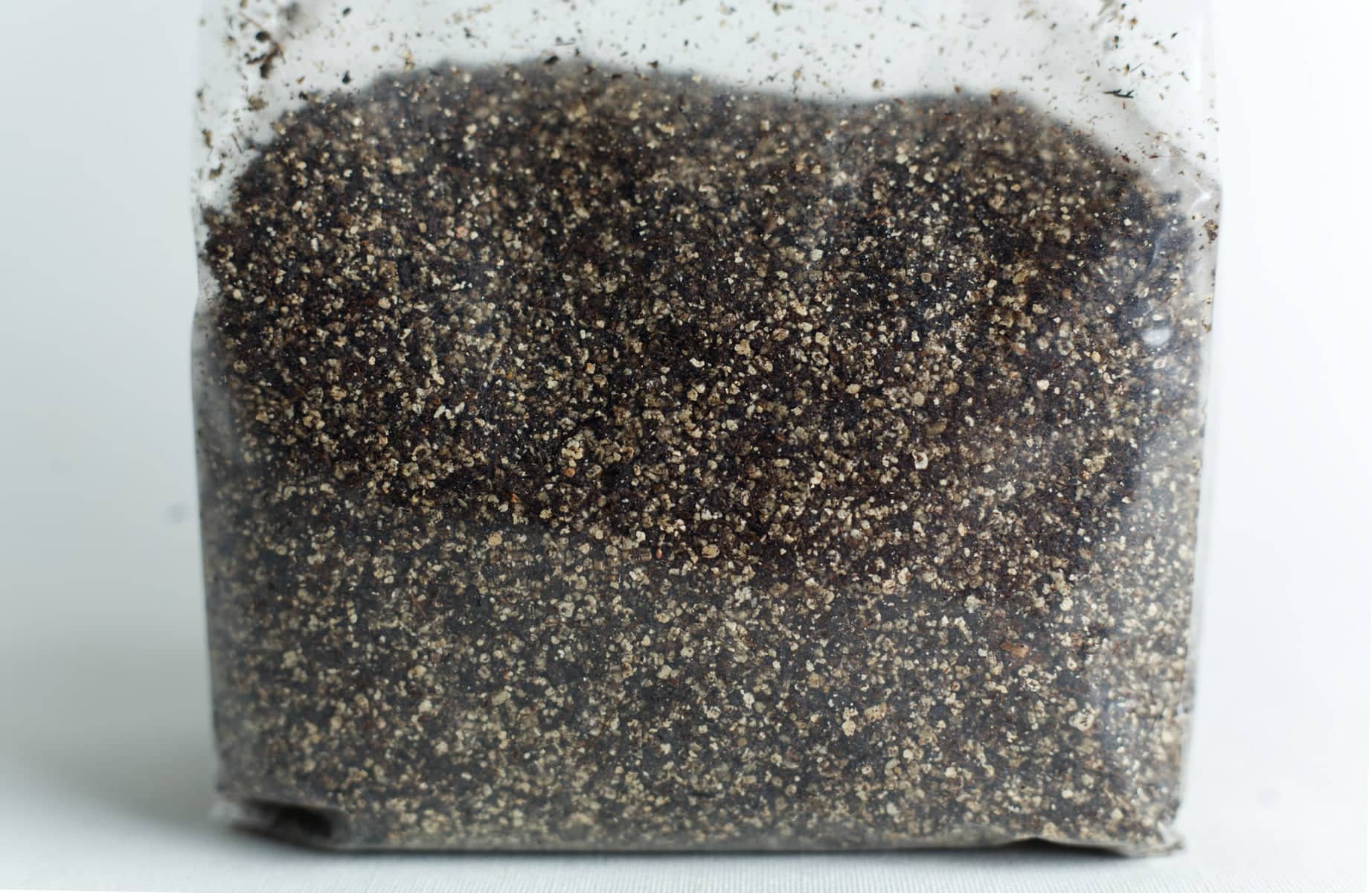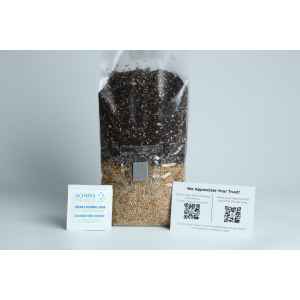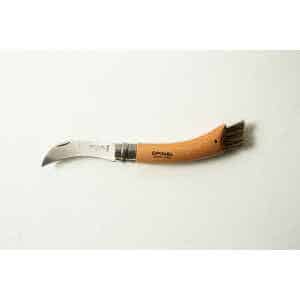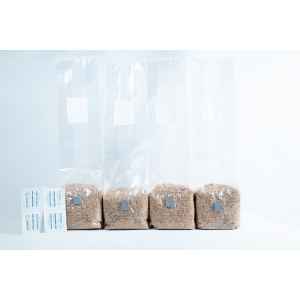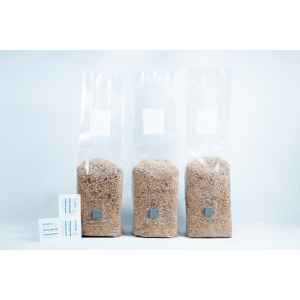Description
Mushroom Casing Layer
The casing layer is essential in mushroom cultivation and is predominantly used for top-fruiting varieties of mushrooms.
What is a Casing Layer?
A casing layer is a substrate cover designed to:
- Retain essential moisture.
- Initiate and support pinning.
- Prevent surface mycelium from drying out.
- Facilitate optimal pinset formation.
- Provide nutrition and trace minerals.
- Host microorganisms are vital for pin-set formation in some varieties.
If you face challenges like side pinning or uneven pin-set on your substrate surface, our casing layer is the ideal solution. In nature, mushrooms usually form after rainfall, leveraging moist conditions and the cooling effect of moisture evaporation to induce pinning. Simulating these conditions with an apt casing layer can greatly enhance your mushroom cultivation.
Types of Casing Layers:
- Sterilized Casing Layer: (1kg Hydrated at field capacity)
- Ideal for maintaining the perfect surface conditions.
- Best for species that prefer sterilized settings, such as top-fruiting varieties (e.g., Swordbelt, Namoeko). Some exceptions are under the pasteurized casing layer category.
- Reduces contamination risks in low airflow environments, like monotubs, due to its sterile nature.
- Our offering is ready-to-use and pre-hydrated.
- Pasteurized Casing Layer: (250gms dry, add 750ml boiling water to the bag directly. Creates 1 kg casing layer when hydrated.)
- Enriched with beneficial bacteria crucial for certain mushroom varieties.
- Some mushrooms need not only the ideal surface conditions but also specific bacteria for pin-set development.
- Designed for species like Shaggy Mane, Agaricus, and Wine Cap.
- Before use, add 750 boiling water to the bag and let it rest for 4-12 hours.
Density of sterelised casing-Density of Casing Layer Mix:
0.6 kg/L or 600 kg/m³
Your Options:
1X Sterilised or Pasteurised
5X Sterilised or Pasteurised
10X Sterilised or Pasteurised
Note- When you hydrate the pasteurized casing mix, you can sterilize it if you have an autoclave and use it as a sterilized casing layer. Some species, like Almond mushrooms, may not require pasteurization or sterilization as they require the presence of heat-sensitive bacteria to fruit. For this species, add room-temperature water to the mix instead of boiling water.
If you are working with our Grain spawn and do not want to use up all the spawn in one go, or inoculated a grain bag with agar, for which you had to cut open the bag but have no way to seal the bag again consider to have our Medium Sealing Bag Clips
Which casing layer is best for me?
If not growing Shaggy Mane, Agaricus, and Wine Cap, please use a sterilized casing layer.
Why Choose Our Casing Layer?
- Proven Formula: Our casing layer blend has been refined and validated over the years.
- Optimal pH: Both types are adjusted to a pH of 7.5.
- Contamination Control: Proper airflow in your grow space is vital to ward off contamination. Our pasteurized mix uses inorganic materials and additives to minimize this risk. It also features gypsum and calcium hydroxide, enhancing nutrition and adding a pasteurizing effect. Adding a specific amount of gypsum to our mix has been proven to get rid of Trichoderma contamination drastically.
Usage Guidelines:
- Thickness: Target a 1 cm layer.
- Application: Once spread, press down lightly.
- Timing: Only apply the casing layer after the substrate is FULLY COLONIZED and is visibly white.
Note: The enriched nutrition in our blend supports robust mushroom growth.
Looking For Growing Mushrooms in Monotub? Check it out in our Store.
If you opt against a casing layer, you can alternatively use an Atomizer to maintain substrate surface moisture(except Shaggy mane, Agaricus, and Wine cap). Ensure only small droplets form, avoiding excess water. Check regularly until the pin-set begins, then stop misting. Given the constant need for monitoring and the potential for mycelium damage, we recommend our hassle-free casing layer as the “set and forget” method.

